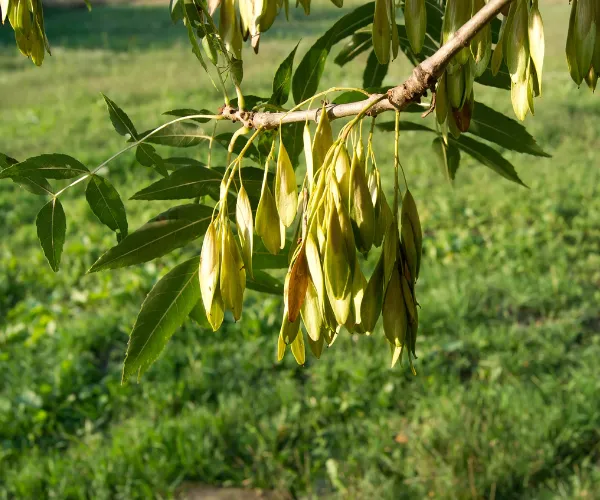Your garden is a sanctuary, a haven of tranquillity where you can escape the noise of the world and connect with nature. Within this oasis, the presence of ash trees can elevate the beauty and serenity to new heights.
However, just as any living organism, ash trees in domestic and home gardens can encounter challenges that threaten their vitality and compromise their aesthetic appeal.
In this blog, we’ll delve into the common issues that ash trees may face and whether ash tree surgery is the right solution for your garden.

What common issues do ash trees encounter?
Ash trees (Fraxinus excelsior) are relatively common in the United Kingdom. They are native to the region and have been an integral part of the British landscape for centuries. Ash trees can be found in various habitats, including woodlands, parks, home gardens, hedgerows, and along riverbanks.
Ash trees, like any other tree species, can encounter several common issues that affect their health.
Ash Dieback
Ash Dieback (Hymenoscyphus fraxineus) is a devastating disease caused by a fungus and has had a significant impact on ash tree populations in recent years. It leads to leaf loss, crown dieback, and ultimately, the death of the tree.
The symptoms of Ash Dieback Symptoms include:
- wilted and discoloured leaves
- lesions on the bark
- crown thinning
Ash dieback has had a profound impact on ash trees across the country. The disease was first identified in the UK in 2012, and since then, it has spread rapidly. It is estimated that over 90% of ash trees in the UK are now affected to some degree by ash dieback. This has led to a decline in the number of healthy and mature ash trees in many areas.

What action can be taken for ash dieback?
When a tree is affected by ash dieback, there are several actions that can be taken depending on the severity of the disease and the condition of the tree.
If the disease is in the early stages and localized to certain branches or parts of the tree, targeted pruning may be an option. Removing infected branches can help reduce the spread of the disease and improve the overall health and appearance of the tree.
In cases where the ash dieback has affected a significant portion of the crown, crown reduction or thinning may be considered. These techniques involve selectively removing branches to reduce the weight and density of the canopy. This can help alleviate stress on the tree and improve its structural stability.
Root Rot
Ash trees can be susceptible to root rot caused by various species of Armillaria fungus. This fungal infection attacks the roots, causing decay and impairing the tree’s ability to uptake water and nutrients. Affected trees may exhibit wilting, leaf discoloration, and a thinning canopy.
In severe cases where the tree’s health is significantly compromised, poses a safety risk, or has extensive root decay, removal of the tree may be the most appropriate action. This helps prevent the spread of the disease to nearby trees and eliminates the safety concerns associated with a weakened tree.
Ash Yellows
Ash yellows is a systemic disease caused by a phytoplasma. It affects the tree’s vascular system, inhibiting nutrient transport. Infected ash trees display yellowing and drooping foliage, stunted growth, and twig dieback.

In many cases, ash yellows is a progressive and irreversible disease. If the tree’s health is significantly compromised or poses a safety risk, removal of the tree may be the most appropriate action. This helps prevent the spread of the disease to nearby trees and eliminates safety concerns associated with a declining tree.
How can I prevent or minimize ash tree diseases?
If your ash tree is currently healthy and you want to prolong the life of your tree, taking preventative measures now will help keep your ash tree thriving for years to come. By being proactive in implementing preventative measures, you can create an environment that promotes the tree’s health, enhances its resilience against diseases and pests, and reduces the risk of structural issues
Regularly prune your ash trees to remove dead, damaged, or diseased branches. Proper pruning improves tree structure, airflow, and sunlight penetration, reducing the risk of diseases and promoting overall tree health.
Take care to avoid damaging the bark or root system of your ash trees during construction, landscaping, or other activities. Mechanical injuries provide entry points for pathogens and can weaken the tree’s defence mechanisms.
Need a professional ash tree surgery survey?
When it comes to the health and well-being of your ash trees, entrusting the care and maintenance to a professional company like Top Garden Services is a decision that can make all the difference. With our expertise and experience in ash tree surgery, you can have peace of mind knowing that your trees are in capable hands.
We offer many different types of tree surgery services, for both domestic and commercial customers. So what are you waiting for? Get in touch with us now for a free quote! Covering Norfolk, Suffolk and Cambridgeshire.





